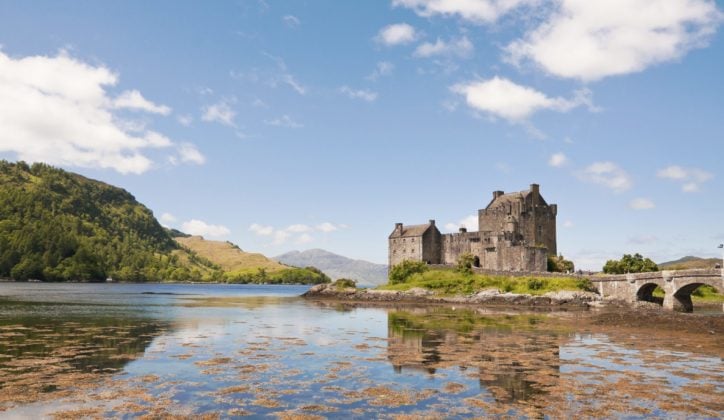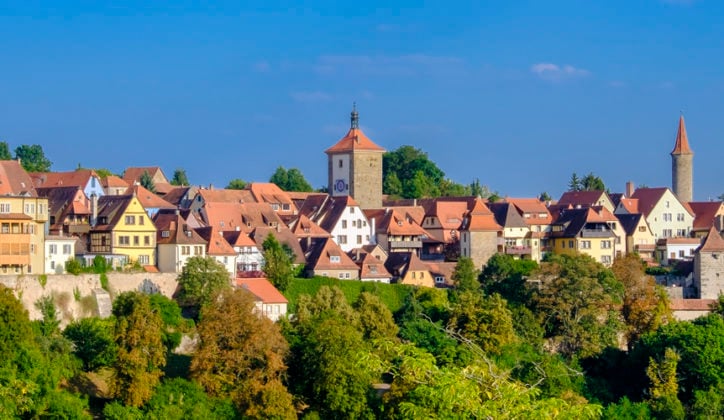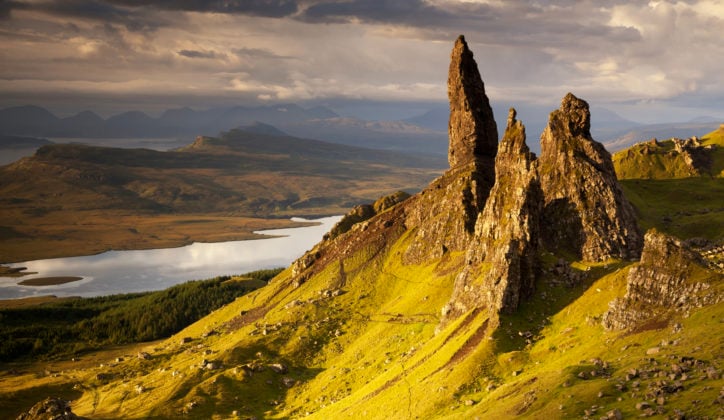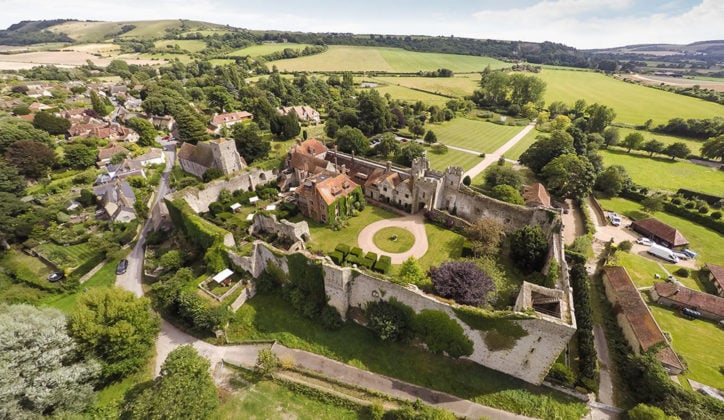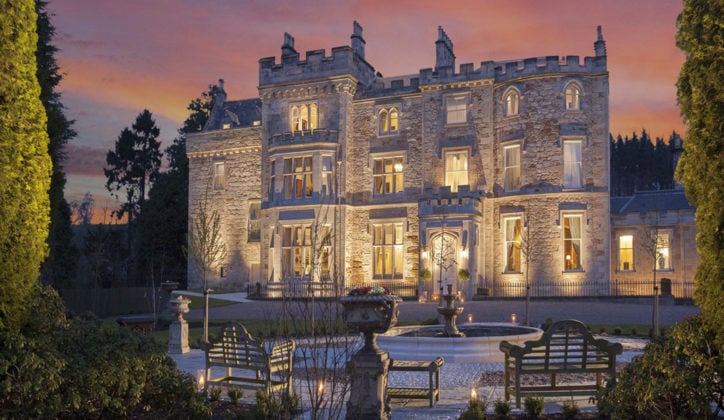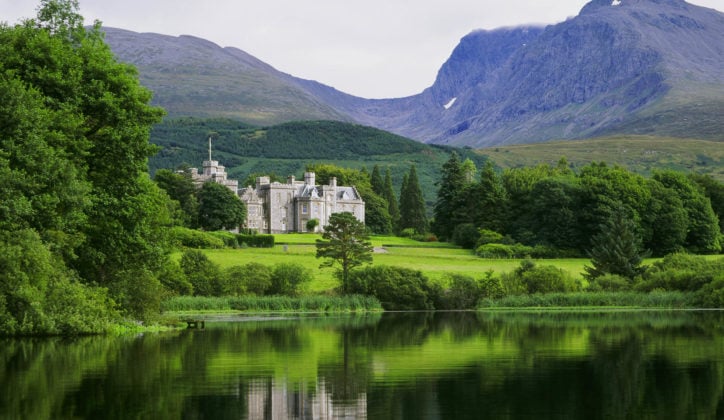Published on: January 23rd, 2024
Last modified: April 23rd, 2024
Of all the magnificent monuments scattered across the globe, there’s something undeniably magical about castles. These storied structures are often luxurious by nature, but they’re also fascinating symbols of the history and heritage of the cultures that built them. Our favourite castles to visit – or even stay at – boast intricate architecture and striking surroundings as well.
There are over a million castles around the world, many of which are in Europe; Germany alone has about 25,000. But other countries like Japan, Mexico and Egypt also offer some excellent examples. The word ‘castle’ generally refers to a fortified residence built during the Middle Ages, with the oldest ones dating back to around 1000 CE.
The main purposes of medieval castles were to house royalty or nobility and serve as military fortifications. However, they were also important status symbols – especially the defensive structures built in England after the Norman Conquest of 1066. Today they offer an intriguing glimpse into the politics, culture and lifestyle of the people who constructed and inhabited them.
We’ve asked our travel designers to share their favourite castles to visit, plus insight into what makes each one special. Here are their picks for the most historic, beautiful and luxurious castles in the world.
1. The Alhambra – Spain
Perched above the gorgeous city of Granada in the south of Spain, the Alhambra showcases both Islamic and Spanish Renaissance architecture. Although it’s technically a palace and fortress complex, its name comes from the Arabic phrase for ‘red castle’ – and its ornate tilework, columns and courtyards would certainly be worthy of royalty.
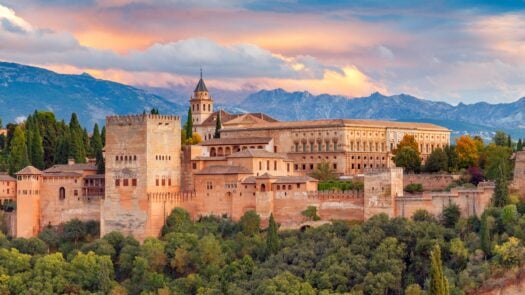
This Moorish masterpiece is one of the essential sights to see in Andalusia, whether you’re into art and architecture or simply appreciate beautiful buildings and panoramic views. To fully experience it, you’ll need to set aside at least a few hours, if not a whole day.
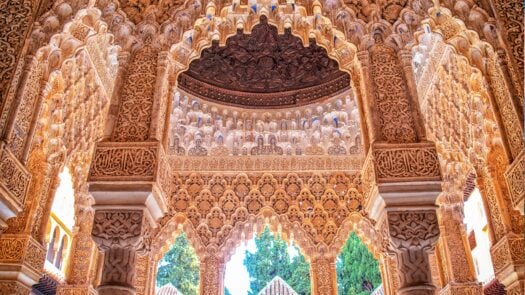
2. Mont-Saint-Michel – France
The tidal island of Mont-Saint-Michel is located about one kilometre off the coast of Normandy in northwestern France. It’s crowned by a grand abbey that has drawn pilgrims here for centuries; at low tide, they were able to walk from the mainland to the island. Its unique position also gave it a defensive advantage, with the rising tides creating a natural barrier for less-peaceful visitors.
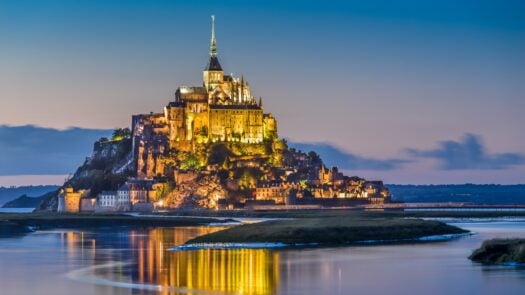
Mont-Saint-Michel is home to just a few dozen permanent residents who live in the village surrounding the abbey. It’s possible to stay overnight on the island, although a day trip provides plenty of time to explore it.
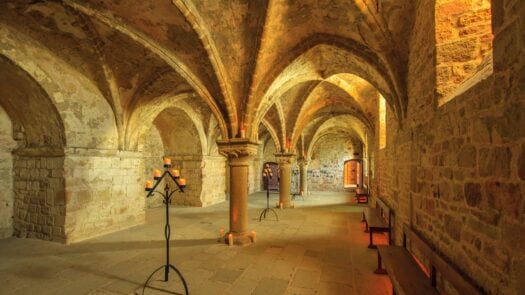
3. Carcassonne – France
The fortified city of Carcassonne has a privileged location in the south of France – and not only because of the idyllic countryside around it. It’s right between the Atlantic Ocean and the Mediterranean Sea, which lent it strategic importance for both the Ancient Romans and the Visigoths.
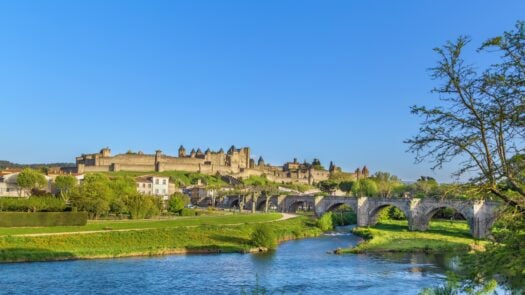
At its heart is the Cité de Carcassonne: a medieval citadel whose fortified double walls and circular, pointed towers give it the look of a classic storybook castle. But la cité isn’t just one building or home; it’s an entire old town encompassing various monuments and houses, including the Château Comtal (which is also sometimes referred to as Carcassonne Castle).
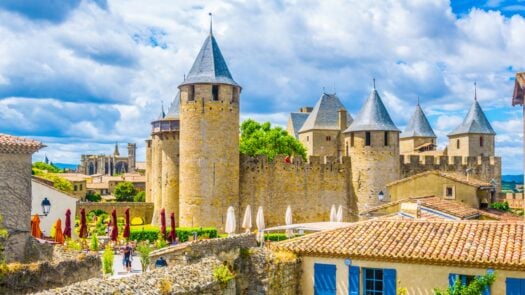
4. Windsor Castle – England
Windsor Castle is both the largest and oldest castle that’s still inhabited, having served as a royal residence since the reign of Henry I. Construction began around 1070, and it’s been occupied by the British monarchy for nearly 1,000 years. It was also the main residence of Queen Elizabeth II during the final years of her life.
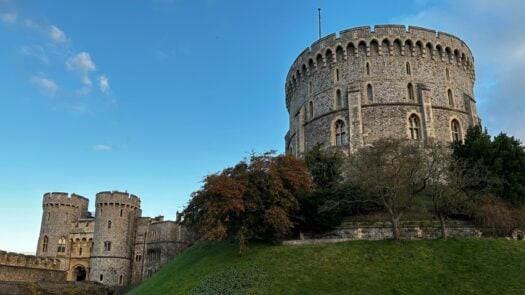
Located just an hour’s drive outside of London, Windsor Castle is a must-visit for anyone with an interest in British royal life. You can tour the grounds, visit St George’s Chapel and see what a fully functional modern castle is really like.
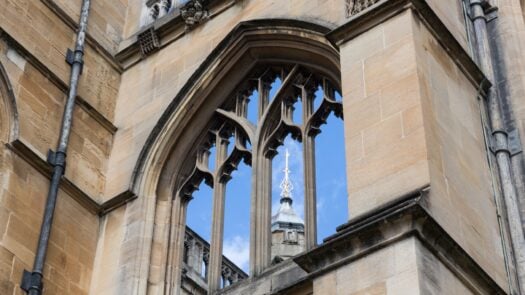
5. Leeds Castle – England
Leeds Castle is one of the top castles in England, with a romantic setting on two islands in the middle of a lake. It’s been home to several royal figures over the years, including Catherine of Aragon, the first wife of Henry VIII. Although it has its roots in the 9th century, most of the modern castle dates to the early 1800s.
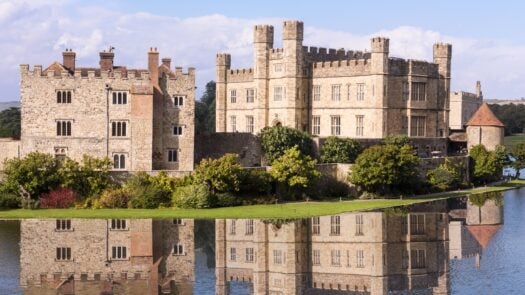
Today Leeds Castle is owned by a foundation and open to the public. Apart from the castle itself, attractions include a maze, a golf course and children’s play areas. If you want to stay overnight, there’s a few different options to choose from within the grounds.
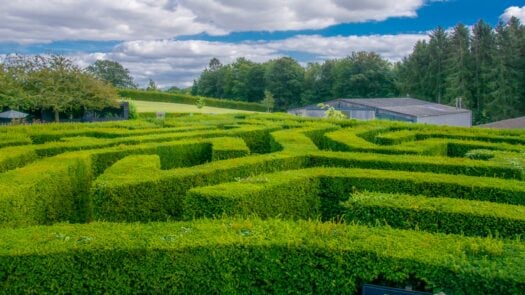
6. Balmoral Castle – Scotland
Scotland boasts several of the most famous castles in Europe, and Balmoral is certainly among them. It’s an official residence of the British royal family, and has been progressively expanded since Prince Albert and Queen Victoria bought it in 1852. Its location amidst the dramatic landscapes of the Scottish Highlands makes it a fantastic stop on any trip.
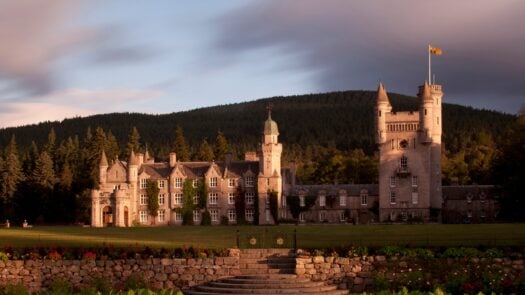
Balmoral Castle is set on a vast estate in Cairngorms National Park, with thousands of acres of trees and about 150 buildings. The grounds, gardens, castle ballroom and Craigowan Lodge are open to the public, and there are several cosy cottages available to rent on the estate.
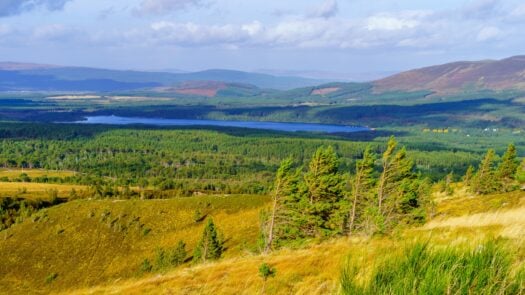
7. Edinburgh Castle – Scotland
The legendary Edinburgh Castle overlooks the city’s old town from its perch on Castle Rock, housing hundreds of years of history. Once a royal residence, it has also served as a military base, a national archive and a prison, among other things. Its complex past and imposing presence above Edinburgh have made it a symbol of the city.
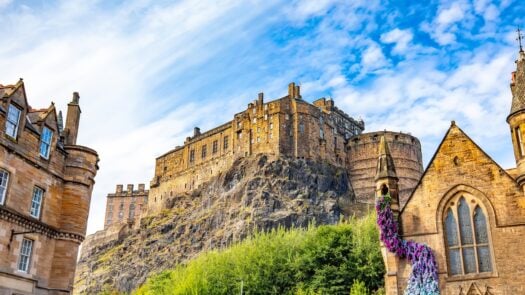
There’s plenty to see here, from the Royal Palace and St Margaret’s Chapel to the National War Museum and various historical exhibitions. Visits are limited to daytime hours, so if you’re hoping to spend the night in a castle, check out the best luxury castle stays in Scotland instead.
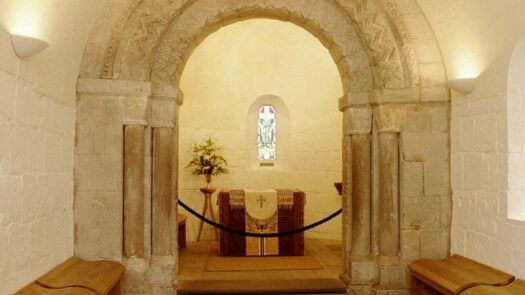
8. Neuschwanstein Castle – Germany
On the southern edge of Bavaria, Neuschwanstein Castle overlooks the picturesque village of Schwangau. This 19th-century palace is tucked into the foothills of the Alps, its towers and turrets emerging from the treetops like something out of a fairytale.
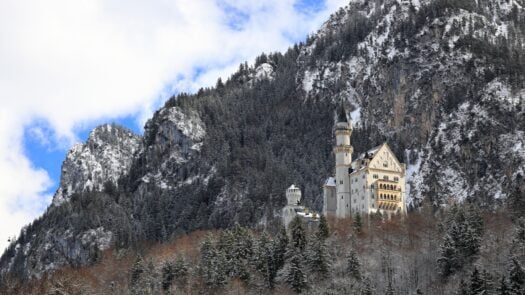
Neuschwanstein Castle was commissioned by King Ludwig II and designed to echo the style of genuine medieval castles, combining various architectural elements to match the king’s vision. He died before it was completed, however, and soon after it was opened to the public. Along with the nearby Hohenschwangau Castle, it’s one of the most beautiful castles in Germany.
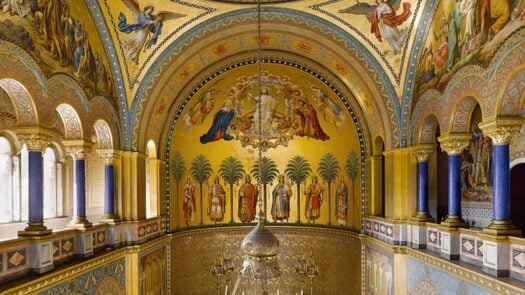
9. Coburg Castle – Germany
Also known as the ‘Franconian Crown’, this impressive fortress is best known for providing refuge to Martin Luther in the 16th century. It’s also a wonderfully well-preserved example of medieval architecture, which has survived throughout several centuries of renovations.
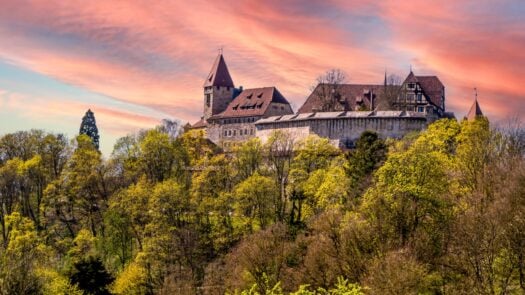
Coburg Castle is located at the northern border of Bavaria on a hill above the town of Coburg, Germany. It’s open to the public and houses exhibitions of art, weapons, coins and other artefacts. It may not be one of the more famous European castles, but it’s definitely among the most interesting for history buffs.
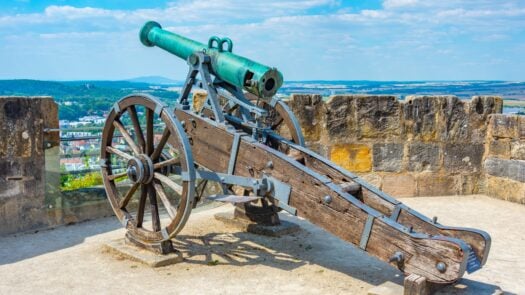
10. Hohensalzburg Fortress – Austria
The enormous Hohensalzburg Fortress is emblematic of the city of Salzburg, Austria. It’s the largest fully preserved castle in central Europe, and looms over the historical district from the top of the Festungsberg mountain. You can either make the trek up to the castle or opt for the Fortress Funicular, which has been open since 1892.
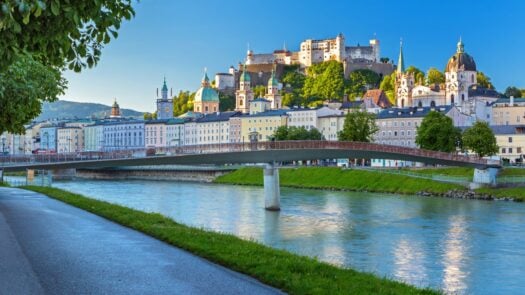
One of Salzburg’s claims to fame is that it’s the birthplace of Wolgang Mozart, and Hohensalzburg Fortress pays homage to this genius composer with romantic concerts held in its Golden Hall throughout the year – an essential experience for fans of classical music.
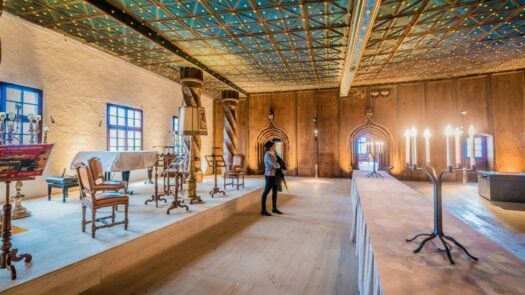
11. Frederiksborg Castle – Denmark
Unlike many of the great castles of Europe, Frederiksborg Castle isn’t medieval; it was built in the early 17th century, making it the largest Renaissance building in Scandinavia. It’s located in the town of Hillerød, Denmark, just north of Copenhagen, on three islets in the middle of a lake.
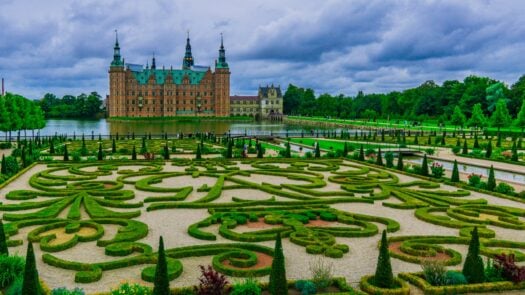
The main attraction of Frederiksborg Castle – apart from its ornate copper towers and red brick architecture – is the Danish Museum of National History, which was opened after a fire destroyed much of the castle in 1859. Here you can admire an immense collection of paintings and portraits, as well as visiting some of the building’s restored rooms.
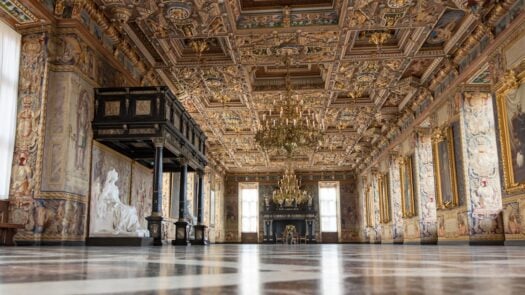
12. Nijō Castle – Japan
Nijō Castle dates back to Japan’s feudal era; it was originally intended to house the Tokugawa shōguns(military dictators) in Kyoto. It consists of multiple palaces, fortifications and lush gardens, providing plenty of opportunities to immerse yourself in the site’s history and enjoy its serene outdoor areas.
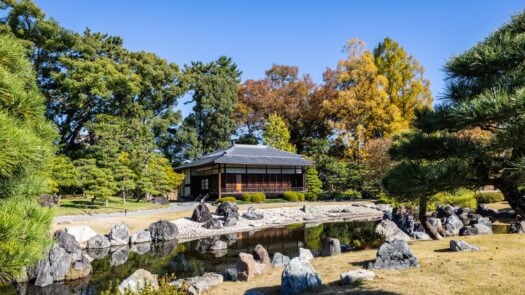
Even if you’ve already visited historic castles elsewhere, the castles of Japan are well worth exploring. Nijō Castle in particular boasts some of the best examples of the early Edo period, with an architectural style known for both its grandeur and its focus on harmony with nature.
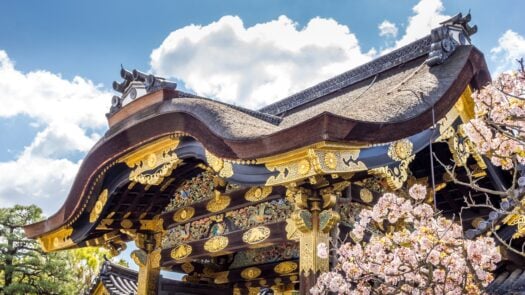
13. Himeji Castle – Japan
If you only go to one castle in Japan, make it Himeji Castle. Located in the city of the same name, it’s considered the best surviving example of 17th-century Japanese castle architecture. It’s also the country’s largest castle and was one of the first places in Japan to be named a UNESCO World Heritage Site.
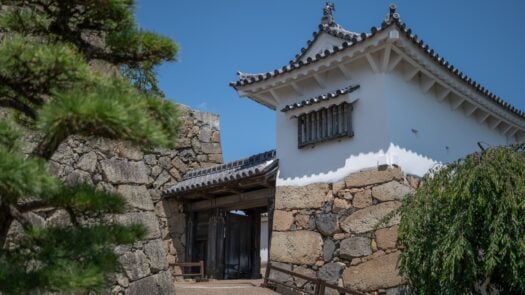
Himeji Castle is also known as ‘White Heron Castle’ thanks to its colour and elegantly curved eaves, which evoke a sense of flight. It’s particularly stunning in springtime, when the country’s famous cherry blossoms transform it into a truly magical sight.
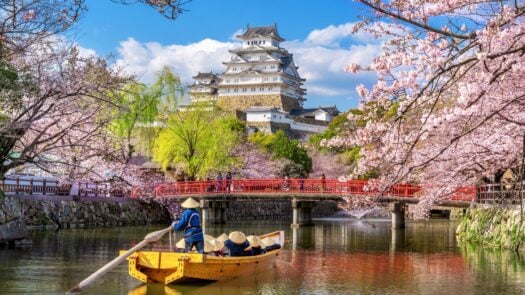
14. Osaka Castle – Japan
Perhaps the most iconic image of Osaka is its eponymous castle set against a backdrop of shiny skyscrapers – the ultimate juxtaposition of Japanese history and modernity. Although it dates back to the 16th century, large parts of the original castle were destroyed during various wars and have since been reconstructed.
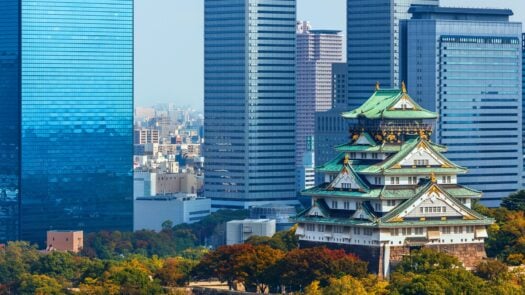
Osaka Castle features two moats, thirteen structures and the gorgeous Nishinomaru Garden. There’s also a history museum in the main tower, where you can learn about its role in the unification of Japan under the samurai leader Toyotomi Hideyoshi.
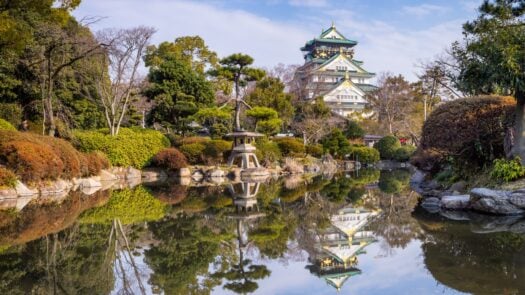
15. Chapultepec Castle – Mexico
Chapultepec Castle is one of only two royal palaces in North America, both of which are in Mexico City. Its name means ‘on the hill of the grasshopper’ in Nahuatl, and its lofty perch on Chapultepec Hill has been a sacred site since the Aztec era. The castle was commissioned in 1785 by the viceroy of New Spain – who died under mysterious circumstances just a year later.
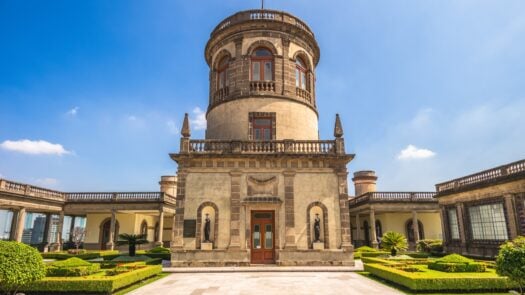
After remaining empty for many years, Chapultepec Castle eventually became a military academy, and later an imperial and presidential home. Today it houses the National Museum of History and is a fantastic place to visit for panoramic views of Mexico’s capital.
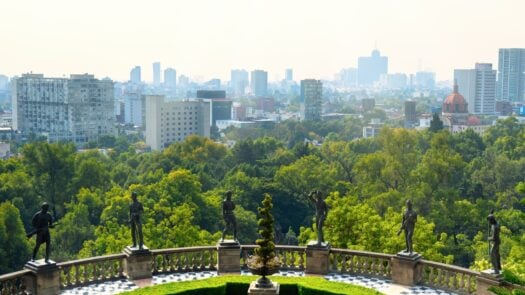
16. Qaitbay Fort – Egypt
Castles might not be the first kind of structure that comes to mind when you think of Egypt (understandably), but then there’s Qaitbay Fort. This 15th-century citadel was built on the site of the Lighthouse of Alexandria about 160 years after its destruction. In fact, materials from the lighthouse may even have been reused to build the fort.

Its primary function was defence, and various rulers and invaders have occupied it over the centuries thanks to its strategic location on the Mediterranean coast. You can tour Qaitbay Fort to learn more about its history and enjoy superb views of Alexandria.
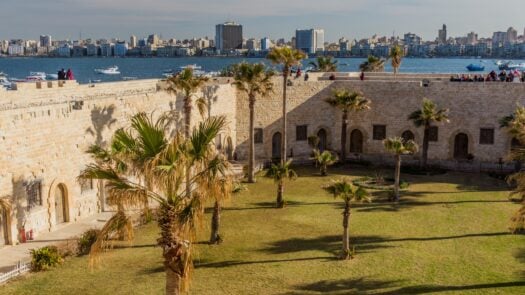
17. Nizwa Fort – Oman
There’s a reason why Nizwa Fort is the most visited national monument in Oman. This massive castle was built in the 17th century as a military stronghold, and its ingenious architecture makes its purpose clear; it’s full of clever traps, hidden passageways and false doors, and the top of its cylindrical main tower can only be accessed by a perilous winding staircase.
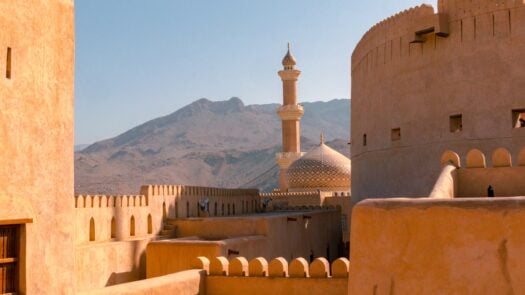
The fortress was built on top of an underground stream to ensure a safe water supply even when under siege, and the entire structure is surrounded by a moat. Visiting Nizwa Fort is an essential activity in Nizwa and an especially great thing to do with kids in Oman.
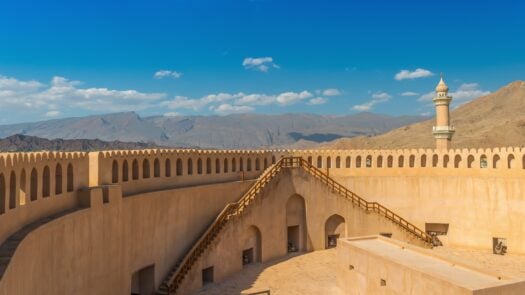
Your next adventure awaits
Stroll through opulent hallways and manicured gardens once home to noteworthy historical figures or at the heart of ancient civilisations. Speak to our travel designers to craft a journey that immerses you in times gone by.



